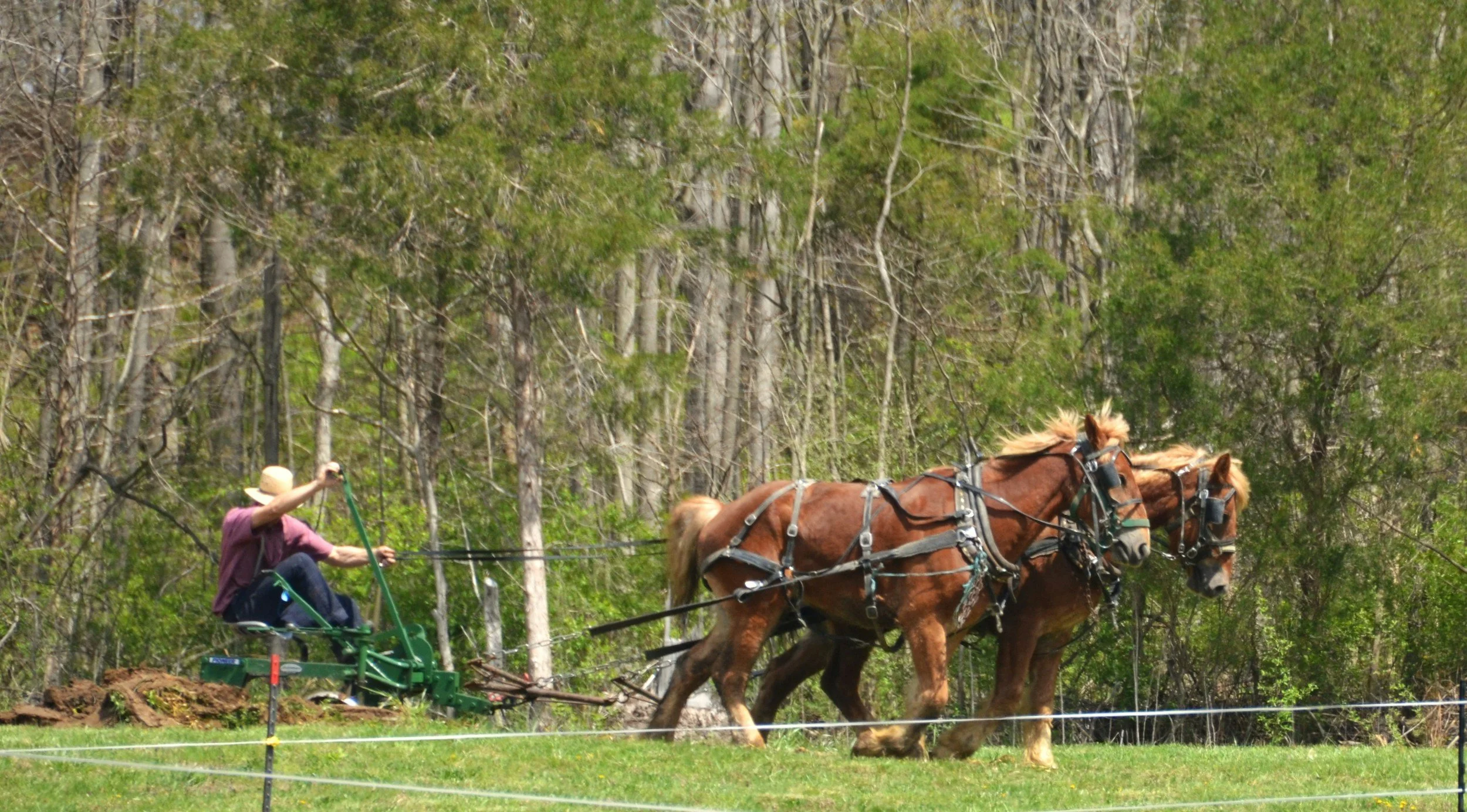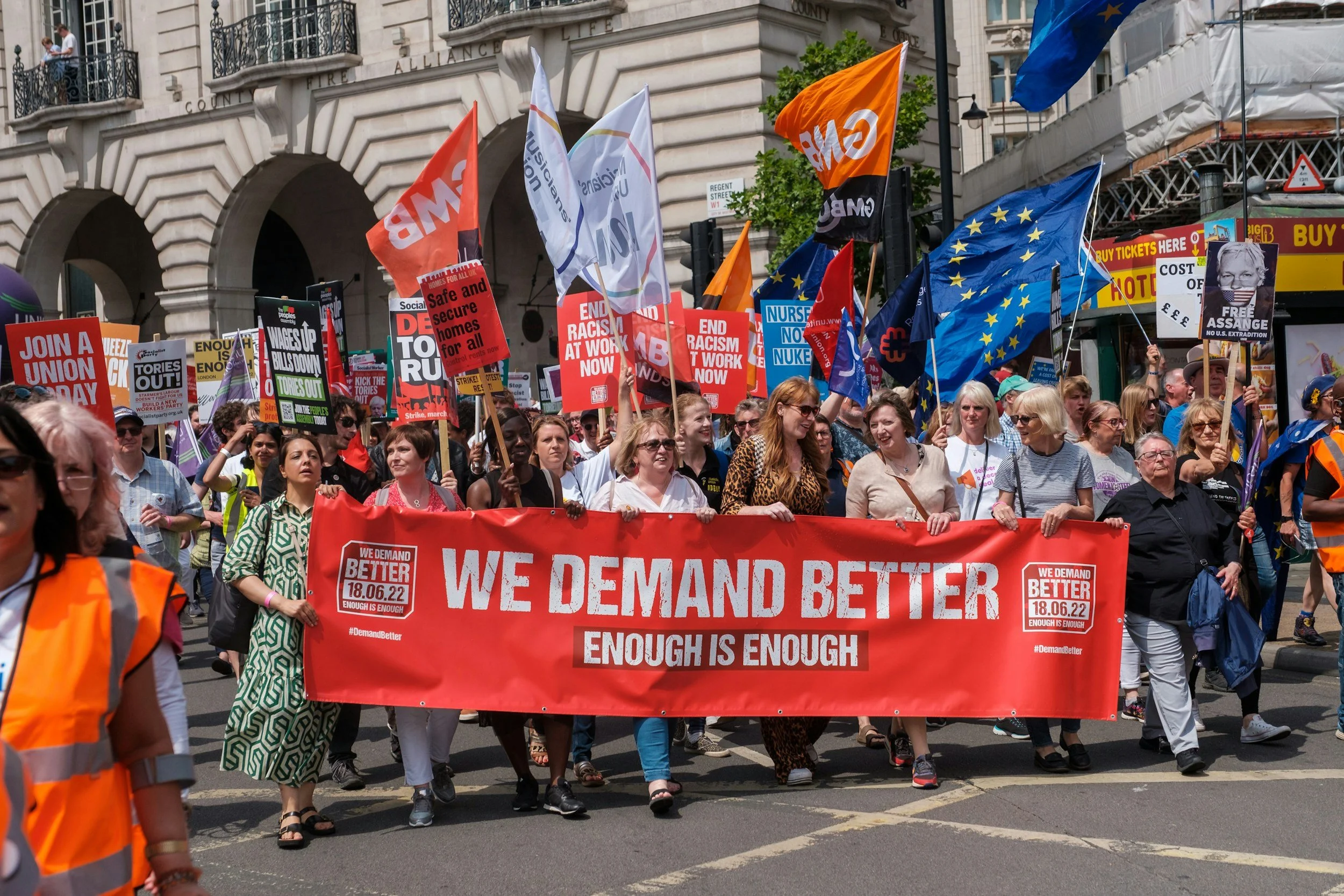The Wild Horse's Bargain: The Evolution of the Social Contract between Employers and Employees
In the American wilderness, wild horses roam freely across vast plains, guided by their natural instincts and generations of wisdom, as they follow the quest for grass and shelter. They face predators, storms, and uncertainty—the harsh price of independence. Yet they possess something their domesticated cousins have forgotten or never experienced: true freedom.
However, the wilderness is shrinking, and the herd is facing challenges in finding consistent food and safe shelter. As human development encroaches and natural resources dwindle, imagine a wild horse encountering a group of domesticated equines contentedly eating hay beside a barn. Hunger gnaws at the wild horse's belly as it watches these tamed creatures feast without worry.
"How do I get that food?" the wild horse asks.
"Submit to our owner," the domesticated horses reply. "Let him train you, tame you, teach you to pull carts. Then you can have what we have."
The exchange seems reasonable. The wild horse trades freedom for security, soon wearing a bridle and pulling a cart. Its meals are guaranteed, its shelter secure—another success story of civilization.
This exchange mirrors the social contract between workers and employers—a relationship that, at its best, creates mutual prosperity, but at its worst, becomes a devil's bargain.
The Benevolent Beginning
Most organizations begin with genuinely good intentions. Founders create enterprises to solve problems, provide value, and care for both customers and employees. Like the original horse owner, they maintain close relationships with workers, understand their needs, and reward contributions fairly.
Early employees discover genuine benefits in this arrangement. No more hunting for the next opportunity or worrying about making rent. In exchange for their labor and loyalty, they receive a steady income, health insurance, and the purpose that comes with a shared mission. Many find real fulfillment in this relationship.
As success grows, current employees become enthusiastic advocates, convincing friends and family to join them. "We have great benefits," they say. "Job security. Meaningful work. You don't have to face the uncertainty out there alone."
The organization grows stronger, more productive, and more profitable. Everyone prospers.
For a time.
The Managerial Revolution
Then comes the inevitable transition. The original owner, now wealthy and aging, steps back from daily operations. Professional managers step in, armed with business degrees and quarterly earnings targets. Their focus is solely on maximizing efficiency, minimizing costs, and increasing productivity.
These managers view the workforce through a different lens. They see inefficiency where founders saw investment in people. They see overfed horses consuming too much hay, taking too many breaks, and working too few hours. Cost-cutting initiatives begin. Work hours extend. Benefits shrink. The personal relationships that once bound the organization together dissolve into the corporate hierarchy.
The horses, now older and more burdened, feel the strain. They work longer hours for less food, with diminishing time to recover. Their motivation to recruit new wild horses shifts from sharing benefits to finding someone young to bear the heavy burden. Camaraderie gives way to strictly professional interactions.
Meanwhile, the carts grow heavier. Quarterly growth demands require ever-greater loads. Managers, focused on metrics rather than the animals pulling the weight, pack more cargo onto each cart. On level ground, the horses can still manage. But when the road turns steep, or rain makes the path slippery, disaster strikes.
Some horses cannot keep up with the new pace. They stumble, fall, and are either dragged along or crushed beneath the very carts they were meant to pull. Managers view these casualties as acceptable losses, discard the weak and injured, and find replacements. The surviving horses witness their colleagues' fate and understand their own expendability.
The Modern Predicament
Today's workplace exemplifies this dynamic with a brutal reality. One example is Wells Fargo, once lauded for its sound banking practices and employee-friendly culture. Under tremendous pressure to grow profits, the bank instituted aggressive sales quotas that led employees to create millions of unauthorized accounts without customer consent between 2002 and 2016. Employees who couldn't meet impossible targets were fired; those who participated in fraudulent practices were eventually discarded when the scandal broke.
In healthcare, the changes prove even more troubling. Hospital systems, like HCA Healthcare, originated as mission-driven institutions dedicated to patient care, but they have grown into massive for-profit chains. Their mission has now shifted to maximizing revenue per bed. Using business models learned from their MBA education, managers and administrators start to cut costs by replacing experienced but higher-paid physicians with less expensive alternatives and cutting staff. Their strategies lead to understaffing, clinician burnout, and patient safety concerns. Nurses and doctors—once treated as valued professionals—found themselves pulling increasingly heavy carts with dangerously high patient loads.
Even tech companies, initially celebrated for their egalitarian cultures, have followed this pattern. Amazon's warehouse workers face grueling productivity metrics that have led to a higher rate of injuries and mental health crises. At the same time, the company's leadership and shareholders continue to enjoy unprecedented wealth and financial gains. The contrast between Jeff Bezos's space ventures and reports of workers unable to take bathroom breaks illustrates the widening chasm between executives and those doing the heavy lifting.
Workers across various industries often find themselves tied to heavy carts, unable to escape when the load becomes too heavy. They need their jobs for health insurance, mortgage payments, and children's education. The very benefits that once represented security now become golden handcuffs, binding them to increasingly profit-driven organizations.
The Union Response
Individual workers learned that to counter the power of corporations, they needed to band together to fight for their wages, benefits, and safety. This realization gave birth to worker associations and the labor union movement—a response born not from ideology, but from necessity.
The formation of unions is a predictable outcome of the power dynamics between employers and employees. To counterbalance the power, individual workers in organized labor created a force that corporations could not simply ignore or discard. The threat of coordinated strikes, work slowdowns, and boycotts gave workers leverage they had never possessed as isolated individuals. When the entire workforce of a steel mill or automobile factory walked out together, production ground to a halt, forcing management to negotiate rather than dictate terms.
Early union victories established precedents that have become the standard for today’s American workday. The eight-hour workday, weekends, overtime pay, and workplace safety regulations all emerged from union negotiations and collective bargaining.
But unions, too, proved vulnerable to the corrupting influence of immense power. As labor organizations grew, many developed hierarchical bureaucracies that were disconnected from their rank-and-file members. Union leaders began prioritizing institutional survival and personal benefits over the workers they claimed to represent.
One of the most egregious examples is the case of Jimmy Hoffa, who led the Teamsters union from 1957 to 1971. His tenure was marked by corruption, including looting pension funds to finance Las Vegas casinos and negotiating union contracts that benefited crime families rather than workers. In these cases, union members found themselves paying dues to organizations that enriched only the union bosses and their allies.
Many unions also have a tendency toward protectionism that sometimes hinders progress and innovation. Rigid work rules designed to protect jobs can create inefficiencies that make entire industries less competitive. The American auto industry's decline in the 1970s and 1980s was partly attributed to union contracts that prevented necessary modernization and flexibility. Workers found themselves defending obsolete practices not because they were beneficial, but because change threatened the power structures of the union.
Perhaps most problematically, successful unions sometimes replicated the very exclusivity they once opposed. Building trades unions historically excluded minorities and women, creating their own privileged class while maintaining barriers for others. Senior union members enjoyed job security and benefits while newer workers faced layoffs and reduced compensation—a two-tier system that protected insiders at the expense of outsiders.
Beyond the Metaphor
This is not to suggest that all corporations or unions are inherently good, bad, or evil, or that the free market is fundamentally flawed. Many companies still operate with genuine care for their employees' well-being. The metaphor of the wild horse serves not as condemnation but as a warning—a reminder of what happens when organizations only focus on profit and lose sight of other human dimensions.
For Leaders: Remember that workers aren't merely cart-pullers—they're whole human beings with dreams, families, needs, and purposes beyond work. Sustainable success depends not just on quarterly profits but on the physical, social, and spiritual well-being of your workforce. Leaders who treat people holistically, see potential in them, and invest in them rather than just extracting their labor and using them as stepping stones, will reap the rewards.
For Workers: You have more power than you realize, especially when you band together thoughtfully. Work is essential for generating income and providing financial security. However, remember that your own health—physical, social, and spiritual—takes priority over the health of any organization. Don't let extravagant benefits, fancy titles, and narrow corporate visions overshadow your own dreams and purposes.
For Organizations: The most successful companies recognize that the strengths and unity of their employees, working together toward a shared goal under benevolent leadership, ultimately determine the organization's success. This requires genuine partnership, not just employment contracts. These are the organizations that can outpace competitors who view employees as expendable resources.
Signs of a Better Way
Promising examples already exist. Companies like Patagonia and Interface demonstrated that profitability and social responsibility can coexist. Employee-owned companies, such as REI and Publix, demonstrate how shared ownership aligns the interests of employees and stakeholders. Tech companies like Salesforce have pioneered comprehensive well-being programs that treat employees as whole persons.
The key insight is that sustainable organizations must create value for all stakeholders—customers, employees, shareholders, and communities—rather than extracting maximum value for profit alone.
The Choice Ahead
We stand at a crossroads; it is always the case. The old model of employment—trading freedom for salaries and titles while accepting ever-increasing demands—is breaking down. Workers are leaving toxic environments or unsustainable workloads in unprecedented numbers, seeking employers who respect their humanity or opting for self-employment. Some domesticated horses have decided to leave the bridle and big cart behind, along with a sense of security, to be free again.
Smart organizations are already adapting. They're creating flexible work arrangements, investing in employee development, and building cultures of genuine care and respect. They understand that in an economy increasingly dependent on creativity, innovation, and collaboration, you cannot extract the best from people—you can only create conditions where they freely give their best.
The wild horse's bargain need not end in exploitation. When both sides approach the relationship with honesty, collaboration, and mutual respect, extraordinary things become possible. Horses can pull incredible loads when they're well-fed, well-cared for, respected, and working toward a shared purpose they believe in.
A Vision Worth Pursuing
Imagine workplaces where people bring their whole selves—their creativity, passion, and unique perspectives—to meaningful challenges. Where success is measured not just in quarterly profits, but in employee flourishing, customer delight, and positive community and environmental impact. Where the relationship between worker and organization is genuinely symbiotic rather than extractive.
This isn't a utopian vision—it's practical wisdom. The companies and organizations that figure this out first will attract the best talent, create the most innovative solutions, and build the most sustainable competitive advantages.
The wild horses are watching. They're deciding whether to trust owners with their freedom. The answer will determine not just the future of work, but the kind of society we become.
Companies that forget this lesson may find their carts abandoned by the roadside, their drivers left wondering where all the good horses went. But those who understand will find themselves leading the current toward a better way of working and living together.







